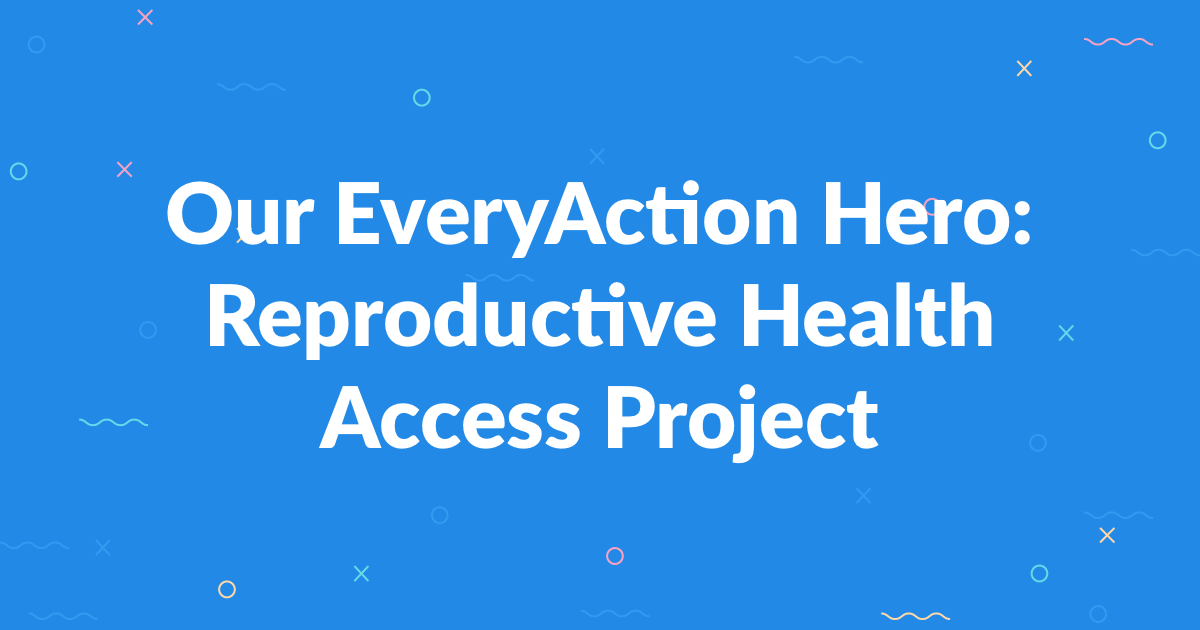Our EveryAction Hero: Reproductive Health Access Project

Reproductive Health Access Project works at the crossroads of the medical community and the reproductive rights space to mobilize and train clinicians to ensure access to abortion, contraception, and miscarriage care.
I had the chance to sit down with Executive Director and Co-founder, Lisa Maldonado, and Development Officer, Rosanna Montilla-Payano, to talk about their incredible work advocating for reproductive health in the primary care community and how using EveryAction’s best-in-class tools have been instrumental to their mission.
We love a good origin story. How did the Reproductive Health Access Project start?
Our belief is that reproductive health care is basic care and should be provided everywhere. People shouldn’t have to drive for hours or cross a picket line for basic care and that’s what really drives us. I used to work at a community health center with two of our co-founders. They’re both family doctors and in trying to integrate abortion care in our health center, we realized just how difficult it is to do. It wasn’t just the training, but the systems and laws in place that made it difficult to provide care.
Although we succeeded, we established our organization to help others trying to do the same thing.
You’re no stranger to the intense political climate surrounding reproductive rights. I imagine it has affected your organization to some degree, so what has been the reaction?
The 2016 election definitely threw us for a loop. We were so hopeful that we would be dealing with a different administration and that we would really be able to push ahead and make some positive changes at the federal level in terms of expanding access to abortion and contraception. We were completely disheartened, but I have to say the response has been unbelievable. We’ve seen an incredible increase in activism and our organization has grown tremendously.
Before the election, we were working on the ground in seven states. We’re now on the ground in 19 states and that’s because people are so motivated to take action. For us, it’s been a challenge for sure but also a really great thing. We’re a very small organization with five full-time staff trying to harness this incredible energy and follow up and engage with our audience. That’s one of the reasons EveryAction is so great. We’ve been able to use it to easily connect with our entire audience.
We made the transition to EveryAction after we decided that our old system didn’t really match our growing needs. We needed something that included more advocacy and fundraising tools for managing our donors and our data more effectively. As our engagement and donations increased, we also created a volunteer program that EveryAction is helping us manage. It’s just been easier to cater to these different audiences and have plans in place for them.
As your audience grows, how are you keeping them engaged and what causes have really resonated?
From our website to our monthly clinical publications, we have multiple points of engagement with our audience. One of the great things we’ve been able to do with ease in EveryAction is create a welcome series. Whenever someone signs up for our mailing list or one of our publications we get the chance to introduce them to all the different things we do.
We’re also working on expanding our advocacy campaigns. For example, we just did one on net neutrality. We create a lot of media content and we share a lot of clinical information, educational tools, and resources for doctors who work in rural clinics. Because a lot of our stuff is abortion related, without net neutrality this content could be censored. In fact, this was actually our first time using EveryAction to run an online campaign— it was easy! So we’re hoping in the coming year to do more online advocacy, especially since there are so many issues at the local and state level that are rising up this year.
You use EveryAction’s Development tools—including Moves Management and Grants Management—to cultivate donor relationships, build custom reports, and track deadlines and documents through the grant lifecycle. How has this impacted your nonprofit?
We’re a really small organization and staying on top of all of these moving parts can be a challenge! Moves Management helps us segment our givers and build really strong connections. We’re able to schedule our follow ups in the database itself and use those reports to check in on our status. And the same goes for Grants Management. It allows us to stay on top of each phase of the proposal we’re working on. We’re excited to start implementing Action Plans for everyone in our top tier of prospective donors.
Reproductive Health Access Project occupies a unique space, right in the middle of reproductive rights and primary health care. How would you describe that overlap?
I think that is probably what makes us really unique as an organization is that we live in both spheres—the primary care world and the reproductive health world. Fortunately, people respect us in both of these realms. All the clinicians that we work with are primary care providers; they’re family doctors, pediatricians, nurse practitioners. Our conversations with these professionals are informed by our knowledge of the reproductive health world. And then on the flip side we’re also really active in the reproductive rights world. When we’re in that space, we’re advocating for primary care because that’s often overlooked. But our mission is always to be a bridge and to bring those two communities together.


